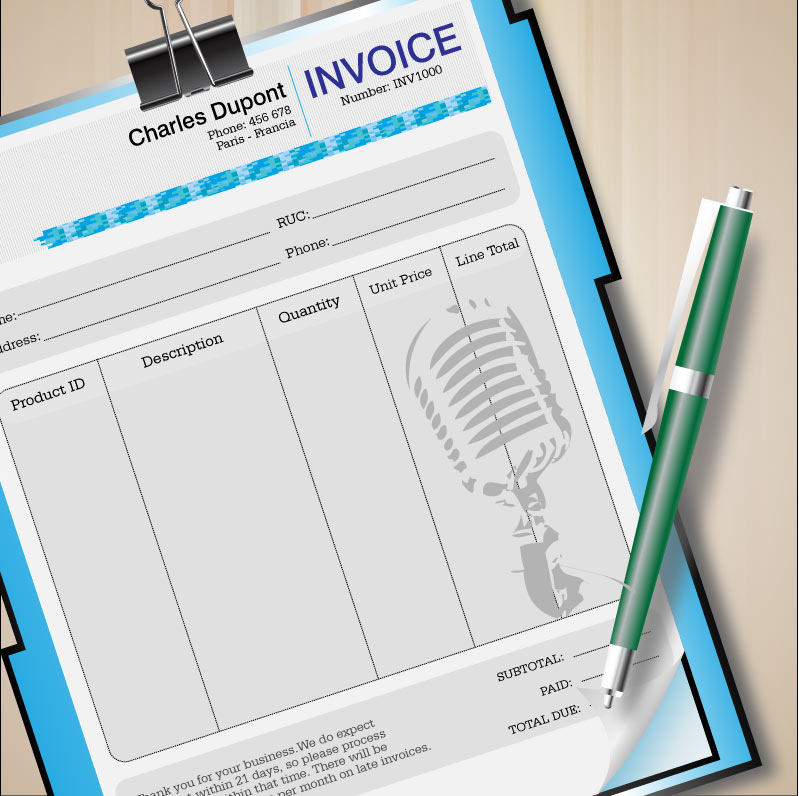So you agreed a price, you’ve completed the voice over and now it’s time to send that all important invoice. You have a great chance to do one of two things here. Screw things up completely by sending through an unprofessional back of a cigarette packet invoice or send through a branded invoice which presents you in the best possible light in front of your client that hopefully will lead to repeat business.
We’re not talking rocket science here! Submitting a professional invoice after completing a voice over job is a serious business and not to be taken lightly. Your invoices need to represent you appropriately and demonstrate to the client that you are a thoroughly professional VO artist.

There are plenty of invoice examples all over the internet so do a search and find a version that works for you. The basics of an invoice should include:
- – Your business name and address details
- – The name and address of the company you are invoicing
- – A unique invoice reference number
- – A date for the invoice
- – A list of the VO services provided, line by line, and their cost
- – A total amount for the invoice.
- – The payment terms for the invoice (i.e. how long the client has to pay)
- – VAT or tax rate %
Here are a few tips for producing a professional invoice:
- Once you have decided upon a template then use the same one each time. Don’t keep changing the style of the template; it will look like you’re an amateur who can’t make their mind up.
- If you have a company brand/logo, make sure you incorporate it into your invoice so that you look like a professional.
- Double check the invoice before you send it out. Misspelling a name or getting the amount wrong will cause you and your client a lot of embarrassment.
- Keep a record of all your invoices so that you chase them if they don’t get paid and so that you can demonstrate to the tax office that you keep good records.
- Create the invoice in PDF format so that it can’t be altered by anybody
- It’s good practice to send your invoice one day after the completion of the job. Invoice on the same day and you will look a bit desperate. Invoicing a significant time after the job will look like your disorganised.
A lot of the above is plain common sense but it’s amazing how many VO artists, when they are first starting out, don’t really have a game plan for invoicing and end up sending out invoices that don’t do them any favours. Start as you mean to go on by invoicing professionally every time!
For more in-depth information about invoicing, check out this article from Dave Courvoisier’s blog about it. It will give you the view from a highly experienced, seasoned professional
What invoice template do you use? What’s your experience of creating invoices and more importantly, getting paid on time? It would be good to hear from you.

Pietro Iulita liked this on Facebook.